
It amazes me how some small appliances can make your life so much simpler. Take making smoothies for example: you’d think it was pretty easy to make a smoothie, but when your blender just doesn’t have the power to crush up frozen fruit or ice, you’re going to have to stop constantly to dislodge the blades or just keep adding liquid until it manages to get through the blend.
That’s why so many people turn to high performance blenders like Vitamix. They have the horsepower and features to blend through anything you put in them, and after trying out the Vitamix Professional Series 300 Ruby and the Vitamix Professional Series 500 Gallery this past week, I’m happy to report that these are blenders that go well beyond smoothies.
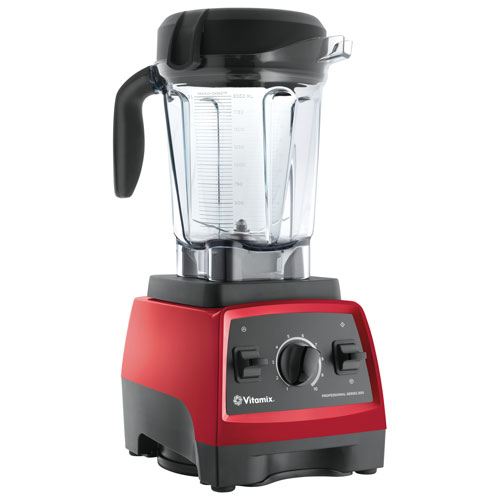
Here’s a comparison of the features on the Vitamix Professional 300 and the Vitamix Professional 500.
Vitamix 300 is a compact blender with a wide 64 ounce container.
- 1440 watt 2.2. peak horsepower motor
- 11 speeds and a pulse button
- Quiet operation
- Spill proof vented lid
- Comes with tamper to dislodge anything stuck in the blades
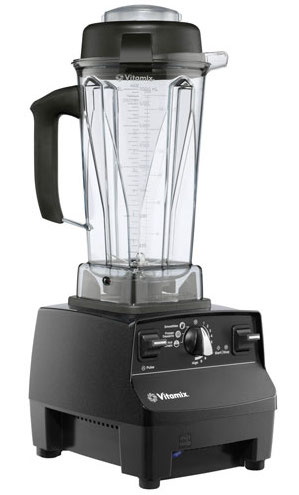
The Vitamix 500 has a tall, thin container, but it also holds 64 ounces like the Vitamix 300.
- 1380 watt 2.0 peak horsepower motor
- 3 programmed settings for smoothies, hot soups, and frozen desserts so you can turn it on and the Vitamix adjusts the speed itself
- 13 variable speed levels and pulse feature
- Spill proof lid and tamper included
Appearance
For how powerful they are, the appearance of the Vitamix is fairly simple. The Vitamix 300 has a wide, short container that makes it a great countertop blender for a small kitchen. The Vitamix 500 has a extra-large tall container, and this would be my choice if I planned on using the blender for smoothies on a daily basis.
There are no LED displays or extra buttons. On the Vitamix 300 you have a pulse feature, a dial you can turn from 1 for low up to 10 for high. There’s a turn on/off switch on the side, and a start and stop switch on the front.
The Vitamix 500 has the same switches as the 300, but it also has three set functions: smoothie, frozen desserts, and soup. You can use these set functions to make food creation easier because it will ramp up the speed at intervals so you don’t have to touch the dial.

Testing and comparing the Vitamix 300 and the Vitamix 500
I have a high performance blender at home so I know from experience that a powerful blender should be able to make dust out of ice and nuts. It also shouldn’t gunk up the blades while it’s doing it either, and on all of these counts, the Vitamix excels.
For my first test of the Vitamix 300 Ruby I made a batch of smoothies. It’s important when using the Vitamix to layer the ingredients in a certain way, and they offer a great set of instructions with both models that include a instruction booklet, a recipe booklet, and a DVD you can watch to learn how to use the blender.
To set up the Vitamix 300 and 500, all you have to do is take them out of the box, put the container on the blender, pop on the lid, and turn them on. There’s nothing complicated in setting them up at all.
I had an older blender that would never grind up walnuts for my favourite banana nut smoothie, so that was what I threw into the Vitamix 300 for my first try. It pulverized the entire contents of the smoothie without even breaking a sweat, and I noticed that level 5 seemed to be the sweet spot for smoothies if you’d like a few chunks of fruit in them or level 9 if you’d like them to be completely smooth.
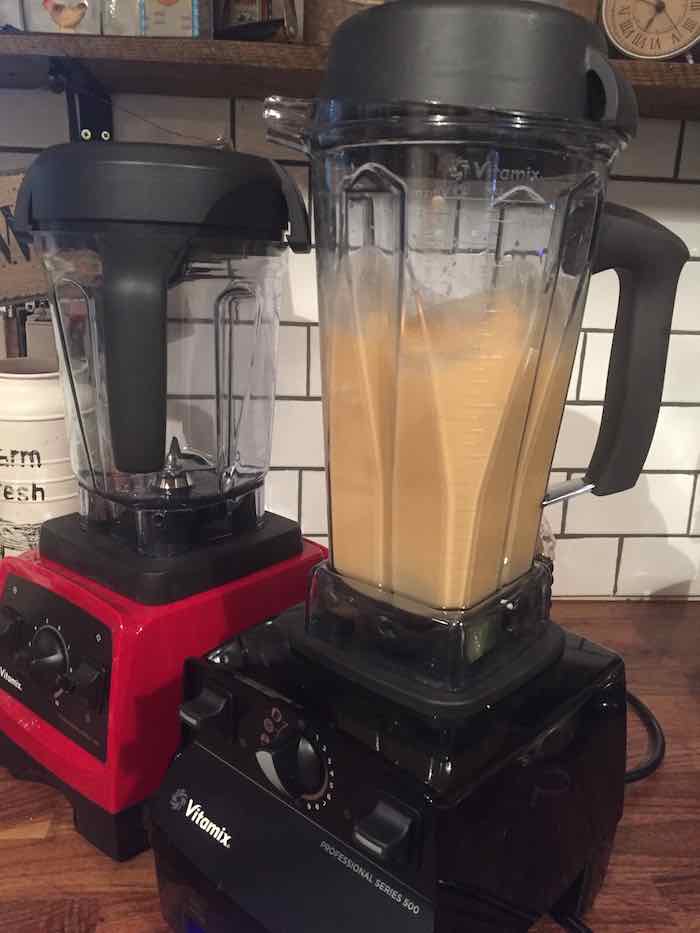
For my next try, I went with the Vitamix 500. I wanted to see how it could create and heat soup, so I baked some butternut squash and followed a recipe I found on the Vitamix website. After layering all of the ingredients I turned on the blender to variable one. After it had started blending I turned it up to ten and left it there for four minutes.
With the Vitamix 500, you don’t have to manually adjust the speeds to make soup. There’s a soup button that starts at variable one and ramps up to variable ten. I tried that on a subsequent soup test and it worked great. I didn’t just walk away and leave the soup blending, but I like how hands-free it was.
For how fast it’s running, I was surprised at how quiet it was. At around the 2-minute mark I noticed condensation forming on the inside of the container, and at 3 minutes there was steam rising from the blender.
I turned it off after four minutes as per the instructions, and I poured it into a bowl. It was perfectly blender, extra hot, and delicious.
Once I had my soup, I decided to start something a little more challenging: hazelnut spread. My kids are big fans of Nutella, and the idea of being able to make my own sounded like fun.
This process involved more the blender. I had to toast the hazelnuts, create the syrup and let it harden, then break it up and put it in the blender. I used the Vitamix 300 because it has a stronger motor, and it blasted through both the hazelnuts and the hardened syrup.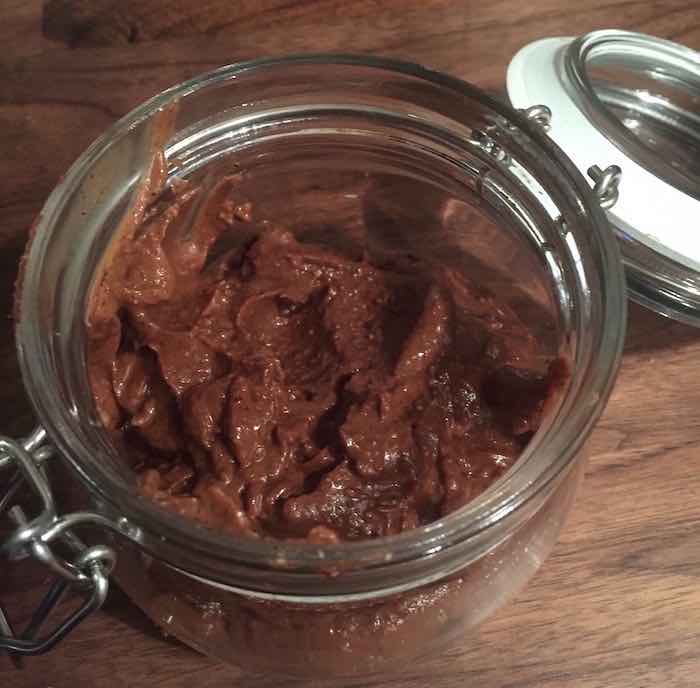
When it came time to add the extra ingredients, the blades were a little slow to spin. I used the tamper to push the mixture into the blades and it would rev up again and slow down. Once I added the liquids, it was off and spinning again.
The mixture came out very smooth and creamy, and although I’d use a different type of cocoa next time as the dark chocolate was a bit too bitter, it definitely had a Nutella flavor. We even did a comparison and it was pretty close.
You can see how I whipped up some butternut squash soup and hazelnut spread in my video demo of Vitamix blenders.
Clean up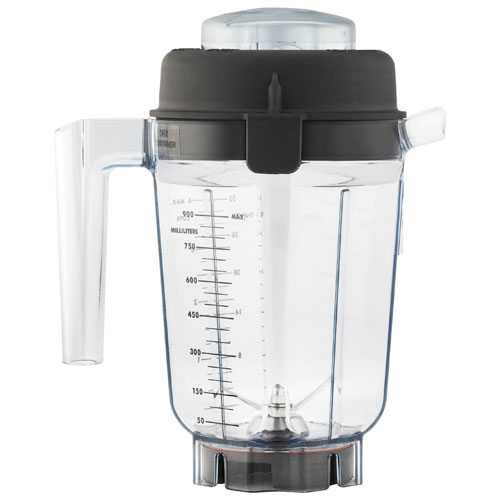
Cleaning up both Vitamix blenders was so easy. Just add water and some a little bit of dish soap, turn the blender on high, and let it spin for a few minutes. The container comes out clean.
Accessories
The Vitamix blenders come with a wet container, and that’s the container you’d use for smoothies, soups, ice cream, and spreads. You can also add an additional dry container. That container lets you grind grains, herbs, and even make bread dough.
Overall thoughts
Both Vitamix models are high performance amazing blenders that will blast though anything. The Vitamix 300 Ruby is slightly more powerful, but I think the main difference is the style and functions: one is tall while the other is wide and compact, and one has preset buttons while the other has a simple speed dial.
I’d make use of both, but in my small kitchen the Vitamix 300 Ruby would be the best choice. I like to have control of the blender so I don’t normally use preset functions anyway.
You can check out both Vitamix models and everything else Vitamix on Best Buy right now.
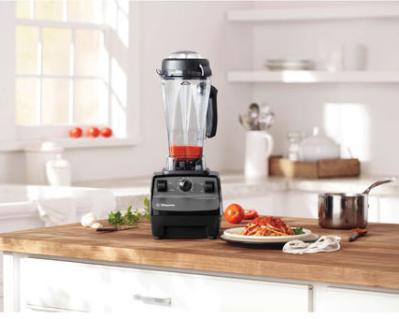
How to make healthy smoothies in the Vitamix |

How to make in the Vitamix |

Check out these surprising things |



